7 Nights / 8 Days
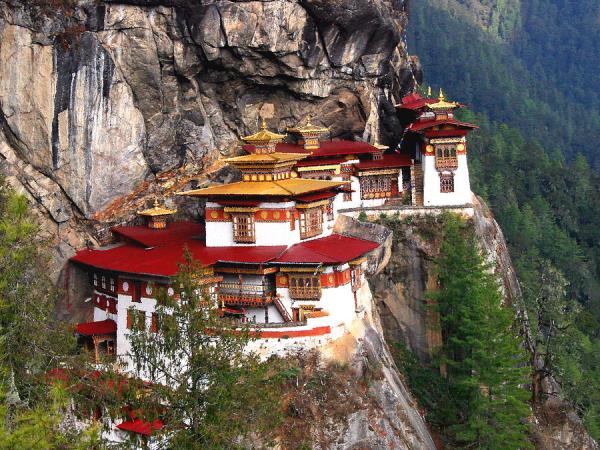
Bhutan is situated in the eastern end of the Himalayas. It's a beautiful landlocked country. The moment you think of Bhutan, you can imagine artistically designed monastries, amazing looking dzongs, and scenic treks.
Here are a couple of things that you shouldn’t miss on your trip to Bhutan.1. Paro Taktsang or Tiger Nest Monastery
Paro Taktsang is commonly known as Tiger Nest Monastery. This could be one the most the most awe-inspiring treks ever. The view of Paro Valley from the monastery is absolutely surreal and this is one of the places that is not to be missed. The monastery is 3120 meters above the sea level and it clings to a cliff. Although it takes an entire day, this trek to the monastery is totally worth it.: Paro Taktsang or Tiger Nest Monastery© Runaway Juno Paro Taktsang or Tiger Nest Monastery
Image credit: Runaway Juno
Paro Taktsang is commonly known as Tiger Nest Monastery. This could be one the most the most awe-inspiring treks ever. The view of Paro Valley from the monastery is absolutely surreal and this is one of the places that is not to be missed. The monastery is 3120 meters above the sea level and it clings to a cliff. Although it takes an entire day, this trek to the monastery is totally worth it.
2. Punakha Dzong
Punakha Dzong now serves as the administrative centre of Punakha district. It is located at the confluence of two rivers which makes it all the more alluring. The location of the Dzong makes it picture perfect and makes for a good place for relaxation.© Painted Stork Punakha Dzong
Image credit: Painted Stork
Punakha Dzong now serves as the administrative centre of Punakha district. It is located at the confluence of two rivers which makes it all the more alluring. The location of the Dzong makes it picture perfect and makes for a good place for relaxation.
3. Buddha Dordenma
Visit Buddha Dordenma to see the gigantic statue of Shakyamuni Buddha. It is situated atop a hill that offers spectacular view of Thimpu. This statue can be seen from many places in Thimpu. The statue is so very well done and is a perfect getaway to see the panaromic view of Thimpu.© Druk Greenland Buddha Dordenma
Image credit: Druk Greenland
Visit Buddha Dordenma to see the gigantic statue of Shakyamuni Buddha. It is situated atop a hill that offers spectacular view of Thimpu. This statue can be seen from many places in Thimpu. The statue is so very well done and is a perfect getaway to see the panaromic view of Thimpu.
4. National Memorial Chorten
This is one of the religious centers in Bhutan. The memorial is in the heart of Thimpu and is constructed in Tibetian style. It would definitely serve as a good place to capture some portriats and also to witness the culture.: National Memorial Chorten© Long Drive Holiday National Memorial Chorten
Image credit: Long Drive Holiday
This is one of the religious centers in Bhutan. The memorial is in the heart of Thimpu and is constructed in Tibetian style. It would definitely serve as a good place to capture some portriats and also to witness the culture.
5. Crafts Bazaar
Authentic Bhutanese art and craft Bazaar is situated in Thimphu and this is where you can shop for authentic Bhutanese craftwork. They do not sell anything here that has been imported. This place is your window to witness excellent Bhutanese workmanship.: Crafts Bazaar© Madhu Gopalan Crafts Bazaar
Image credit: Madhu Gopalan
Authentic Bhutanese art and craft Bazaar is situated in Thimphu and this is where you can shop for authentic Bhutanese craftwork. They do not sell anything here that has been imported. This place is your window to witness excellent Bhutanese workmanship.
6. Khamsum Yulley Namgal Chorten
Khamsum Yulley namgal Chorten stands on a ridge above the Punakha Valley. It takes about an hour for the hike to be completed. You even get to walk through paddy fields tor each this 4-storeyed temple. It is a splendid example of Bhutanese architecture.© Local Bhutan Travel Khamsum Yulley Namgal Chorten
Image credit: Local Bhutan Travel
Khamsum Yulley namgal Chorten stands on a ridge above the Punakha Valley. It takes about an hour for the hike to be completed. You even get to walk through paddy fields tor each this 4-storeyed temple. It is a splendid example of Bhutanese architecture.
7. Zorig Chusum
This school promotes Bhutanese arts and crafts. If you wish to shop for exquisite painting, embroidered clothing, woodcarvings amongst other things, this is your go-to place. This is very close to the city center in Thimpu.: Zorig Chusum© Travel Triangle Zorig Chusum
Image credit: Travel Triangle
This school promotes Bhutanese arts and crafts. If you wish to shop for exquisite painting, embroidered clothing, woodcarvings amongst other things, this is your go-to place. This is very close to the city center in Thimpu.
8. Ema Datshi
This dish is considered as the National dish of Bhutan. It is made out of chillies [Ema]and cheese [Datsi]. If you like spicy food, then this one is for you. It is usually eaten with rice. You can perhaps eat it as a dip too. For cheese lovers too, this is a must eat!: Ema Datshi© River Bank And Badger Ema Datshi
Image credit: River Bank And Badger
This dish is considered as the National dish of Bhutan. It is made out of chillies [Ema]and cheese [Datsi]. If you like spicy food, then this one is for you. It is usually eaten with rice. You can perhaps eat it as a dip too. For cheese lovers too, this is a must eat!
9. Zuri Dzong Hike
If you like hiking then Zuri Dzong hike is for you. It is a 2 hour hike from the National Museum in Paro. You get to hike along the hillside and you will be enchanted by the breathtaking views of Paro.© Travel Triangle Zuri Dzong Hike
Image credit: Travel Triangle
If you like hiking then Zuri Dzong hike is for you. It is a 2 hour hike from the National Museum in Paro. You get to hike along the hillside and you will be enchanted by the breathtaking views of Paro.
10. Phobjikha Valley
If you plan to visit from late November to January, you could get to see the migratory “Black Necked Cranes”. These cranes actually come from Tibet and it is definitely worth visiting for the splendour of this valley. To celebrate the arrival of the endangered Black-necked Cranes, the locals have a festival called as The Black-Necked Crane festival that takes places in the courtyard of Gangtey Gonpa, Phobjikha Valley.© My Bhutan Trip Phobjikha Valley
Image credit: My Bhutan Trip
If you plan to visit from late November to January, you could get to see the migratory “Black Necked Cranes”. These cranes actually come from Tibet and it is definitely worth visiting for the splendour of this valley. To celebrate the arrival of the endangered Black-necked Cranes, the locals have a festival called as The Black-Necked Crane festival that takes places in the courtyard of Gangtey Gonpa, Phobjikha Valley.
11. Tshechu
Tshechu, meaning tenth day, is a religious festival that takes places in different places and in various temples, monastries, and dzongs. The month of the celebration varies from place to place and is good to find out details before going if you’re interested in catching this vibrant mask dance festival. Stories from the times of Guru Padmasambhava are depicted in the dances.© dna India Tshechu
Image credit: dna India
Tshechu, meaning tenth day, is a religious festival that takes places in different places and in various temples, monastries, and dzongs. The month of the celebration varies from place to place and is good to find out details before going if you’re interested in catching this vibrant mask dance festival. Stories from the times of Guru Padmasambhava are depicted in the dances.
12. Tashichho Dzong
This is where you can find the administrative headquarters, royal palace, and also a monastery. This is place that should be visited in the evenings to witness the beauty and sheer brilliance.: Tashichho Dzong© Tourism Tashichho Dzong
Image credit: Tourism
This is where you can find the administrative headquarters, royal palace, and also a monastery. This is place that should be visited in the evenings to witness the beauty and sheer brilliance
On arrival at Bhutan’s frontier town, Phuentsholing, received by our representative and check into the hotel.
The town of Phuentsholing is the gateway for travelers entering Bhutan by road. A thriving commercial centre on the northern edge (West Bengal) of the Indian plains, Phuenthsoling is situated directly at the Himalayan foothills. This town is fascinating mixture of Indian and Bhutanese, a perfect example of mingling of people and their culture.
Evening as time permits visit Zangtho Pelri: Situated in city centre, this small temple represents the heaven of Guru Rinpoche. bhutan
Later explore Phuentsholing town and market.
Overnight at the hotel in Phuentsholing. (Altitude 300m)
After breakfast, embark on an interesting journey to Thimphu en route visiting Kharbandi Gompa, the beautiful monastery founded in 1967 by Royal Grand mother, Ashi Phuntsho Choedron. Here you can see the statues of Shabdrung Ngawang Namgyal and Guru Rimpoche along with paintings portraying scenes from the life of Lord Buddha. The monastery garden provides great views of the Phuentsholing town and surrounding plains of West Bengal.
Phuentsholing – Thimphu highway was built in 1961further stimulating economic activities between India & Bhutan. Drive further stopping en route at Gedu University for photos. Later after a short tea break nearby Chukha, resume your journey through a small town of Chimakothi and afterwards stop at Chuzom, the confluence of Paro & Thimphu rivers.
On arrival, in Thimphu check-into the hotel. The capital town of Bhutan and the centre of Government, religion and commerce, Thimphu is a unique city with unusual mixture of modern development alongside ancient traditions. Situated in western Bhutan, with the population of about 1,00,000, it is perhaps still the world’s only capital city without a traffic light.
Evening an exploratory walk around Thimphu city centre.
Overnight at the hotel in Thimphu. (Altitude 2,320m)
After breakfast, drive to visit Memorial Chorten. Also known as Thimphu Chorten, this stupa is located at the heart of the Thimphu city and was built in 1974 to honour the third King of Bhutan, His Majesty Jigme Dorji Wangchuk (1928-1972) popularly known as Father of modern Bhutan.
Afterwards visit to Buddha Point (Kuensel Phodrang). It holds one of the largest Buddha’s statue in the country of 169 feet (51.5m), made of bronze and gilded in gold. Visitors can also get a good overview of the Thimphu valley from this point.
bhutanThen visit Changangkha Lhakhang. This temple is located above central Thimphu, built in 12th century by Lama Phajo Drukgom Shigpo on a ridge overlooking the town. Local parents traditionally come here to get auspicious names for their newborns or blessing from the protector deity ‘Tamdrin’.
Later drive to upper Motithang in Thimphu to visit Takin Preserve. The Takin is the national animal of Bhutan, and looks like a cross between a cow and a goat. Legend has it that the animal was created by the great Buddhist yogi, Drukpa Kuenley, and it can be found only in Bhutan and nearby areas. Taxonomists place the animal in a category of its own as it is not similar enough to any other animal to fit established categories.
Post lunch, sightseeing in Thimphu valley including visit to the following : the National Library, housing an extensive collection of priceless Buddhist manuscripts; the Institute for Zorig Chusum (commonly known as the Painting School) where students undergo a 6-year training course in Bhutan’s 13 traditional arts and crafts, Textile Museum, which provides deep insight into Bhutan’s one of the most distinct art form, Folk Heritage Museum, dedicated to connect people with the rich Bhutanese Folk heritage and rural history through exhibits, demonstrations, educational programs and documentation of Bhutanese rural life.
Conclude the day’s sightseeing with visit of Trashichhoedzong, or ‘the fortress of the glorious religion’. This is one of the most impressive buildings situated along the right flank of the Thimphu river built in 1641 by Zhabdrung Ngawang Namgyel who unified Bhutan and was later reconstructed in 1962 by the third King His Majesty Jigme Dorji Wangchuk. This impressive fortress/monastery houses Secretariat building, the throne room of His Majesty, the King and various government offices.
Evening at leisure in Thimphu city centre. Also explore the Local Crafts Bazaar, to browse through example of Bhutan's fine traditional arts.
Overnight at the hotel in Thimphu. (Altitude 2,320m)
After breakfast, drive up to Dochu-la pass (3,088m/ 10,130 ft) stopping briefly here to take in the view and admire the chorten, mani wall, and prayer flags which decorate the highest point on the road. If skies are clear, the following peaks can be seen from this pass (left to right): Masagang (7,158m), Tsendagang (6,960m), Terigang (7,060m), Jejegangphugang (7,158 m ), Kangphugang (7,170 m ), Zongphugang (7, 060 m ), a table mountain that dominates the isolated region of Lunana - finally Gangkar puensum, the highest peak in Bhutan at 7,497m.
Punakha was former capital of Bhutan and seat of the Government until 1955 when the capital was moved to Thimphu. While Wangdue located towards south of Punakha is not more than an enlarged village with a few well provided shops.
On arrival check into the hotel.
Afternoon visit Punakha Dzong or ‘Palace of Great Happiness or Bliss, built at the junction of the Phochu and Mochu rivers in 1637 by Shabdrung Ngawang Namgyal. This majestic dzong served as both the religious and the administrative center of Bhutan in the past. It measures some 600 by 240 feet and has a six-story, gold-domed tower. Inside are courtyards and religious statuary that hint at the depth of history and spiritual tradition embodied here. Your guide will illuminate your understanding of this intricate culture that is exotic, though long established here.bhutan
After exploring Punakha city centre, embark on a short walking excursion to Chimi Lhakhang, located on a ridge surrounded by beautiful paddy fields. From road point, it takes about 10-15 minutes walk through Sobsukha village to reach the monastery. Also known as Fertility temple, it is associated with Lama Drukpa Kuenley, popularly known as ‘Divine Madman’. It is widely believed that couples who do not have children and wanting one, if they pray at this temple, they are usually blessed with a child very soon.
Evening drive pass Wangdue town and its market.
Overnight at the hotel in Punakha & Wangdue. (Altitude 1,300m)
After breakfast drive back to Paro descending back down from Dochu La, follow the way back up the dramatic Wang Chhu and Paro Chhu river valleys, before crossing through Paro town towards the north end of the valley.
En route visit Simtokha Dzong, the oldest fortress of the country constructed by Zhabdrung Ngawang Namgyel in 1629. The name Simtokha literally means ‘Atop a Demon’ and the legend associated with the dzong’s construction tells us that it was built in order to subdue an evil spirit that was harassing travelers in the region.
Later in the day after checking into hotel, proceed to visit Ta Dzong, originally built as Watchtower, which now houses National Museum. The extensive collection includes antique thangkha paintings, textiles, weapons & armour, household objects and a rich assortment of natural and historic artifacts.
Then walk down the trail to visit Rinpung Dzong, meaning (“fortress of the heap of jewels”), which has a long and fascinating history. Along the wooden galleries lining the inner courtyard are fine wall paintings illustrating Buddhist lore such as four friends, the old man of long life, the wheel of life, scenes from the life of Milarepa, Mount. Sumeru and other cosmic Mandala.
Evening take a stroll around interesting city centre of Paro .
Overnight at the hotel in Paro. (Altitude 2,280m)
After breakfast excursion to Taktshang Monastery (approx. 5 hours round trip walk): It is one of the most famous of Bhutan’s monasteries, perched on the side of a cliff 900m above the Paro valley floor. It is said that Guru Rinpoche arrived here on the back of a tigress and meditated at this monastery and hence it is called ‘Tiger’s Nest’. This site has been recognised as a most sacred place and visited by Zhabdrung Ngawang Namgyal in 1646 and now visited by all Bhutanese at least once in their lifetime. The hike to the monastery makes a splendid half day excursion.bhutan
OR
After breakfast embark on a driving excursion to Chelela pass. At an elevation of 3,988 meters, it is considered to be one of the highest motorable passes in Bhutan. About an hour’s drive along a thickly-forested road, this pass is a botanical paradise. The pass provides stunning views of the sacred mountain Jumolhari and Jichu Drake. It is also marked by hundreds of prayer flags fluttering in the wind.
En route also visit Dzongdrakha temple. Often called as mini Taktsang, Dzongdrakha is a cliff-side temple complex on the western side of Paro valley. Four shrines make up the complex, dedicated to Drolma (Tara), Tsheringma (Goddess of Longevity), Guru Rinpoche and the Buddha of the Future, Maitreya. Local oral tradition states that when Guru Rinpoche first came to Bhutan, he came from Nepal, first landing at Drakarpo, and then Dzongdrakha before arriving at Taktsang (Tiger’s Nest) farther north up the valley
Later in the afternoon drive to Drukgyel Dzong, a ruined fortress where Bhutanese warriors fought Tibetan invaders centuries ago. In the early 1954, the Drukgyel Dzong was completely destroyed by fire and today only the ruins remains. The snowy dome of sacred Chomolhari, "mountain of goddess'' can be seen in all her glory from the approach road to the Dzong.
While return to the hotel, along the way, visit the 7th century Kyichu Lhakhang, one of the 108 temples built in the Himalayas by Tibetan King, Songtsen Gampo. The building of this temple marks the introduction of Buddhism in Bhutan.
Overnight at the hotel in Paro. (Altitude 2,280m)
After breakfast excursion to Taktshang Monastery (approx. 5 hours round trip walk): It is one of the most famous of Bhutan’s monasteries, perched on the side of a cliff 900m above the Paro valley floor. It is said that Guru Rinpoche arrived here on the back of a tigress and meditated at this monastery and hence it is called ‘Tiger’s Nest’. This site has been recognised as a most sacred place and visited by Zhabdrung Ngawang Namgyal in 1646 and now visited by all Bhutanese at least once in their lifetime. The hike to the monastery makes a splendid half day excursion.bhutan
OR
After breakfast embark on a driving excursion to Chelela pass. At an elevation of 3,988 meters, it is considered to be one of the highest motorable passes in Bhutan. About an hour’s drive along a thickly-forested road, this pass is a botanical paradise. The pass provides stunning views of the sacred mountain Jumolhari and Jichu Drake. It is also marked by hundreds of prayer flags fluttering in the wind.
En route also visit Dzongdrakha temple. Often called as mini Taktsang, Dzongdrakha is a cliff-side temple complex on the western side of Paro valley. Four shrines make up the complex, dedicated to Drolma (Tara), Tsheringma (Goddess of Longevity), Guru Rinpoche and the Buddha of the Future, Maitreya. Local oral tradition states that when Guru Rinpoche first came to Bhutan, he came from Nepal, first landing at Drakarpo, and then Dzongdrakha before arriving at Taktsang (Tiger’s Nest) farther north up the valley
Later in the afternoon drive to Drukgyel Dzong, a ruined fortress where Bhutanese warriors fought Tibetan invaders centuries ago. In the early 1954, the Drukgyel Dzong was completely destroyed by fire and today only the ruins remains. The snowy dome of sacred Chomolhari, "mountain of goddess'' can be seen in all her glory from the approach road to the Dzong.
While return to the hotel, along the way, visit the 7th century Kyichu Lhakhang, one of the 108 temples built in the Himalayas by Tibetan King, Songtsen Gampo. The building of this temple marks the introduction of Buddhism in Bhutan.
Overnight at the hotel in Paro. (Altitude 2,280m)
This morning we shall check out from the hotel & drop at Bagdogra Airport / NJP RLY Station for Onward Journey. (Tour End)
Holidays Cloud 9 is a noted entity serving the tourism sector of India for over a decade. Since our incorporation in 2008, we’ve been serving clients by offering the best services at the lowest market charges. Hotel booking, car rental, event management, and flight booking are some services offered by us. Mr. Manish Bhargava is the chairperson of the company and laid its foundation in New Delhi. Being a tourism maven and visionary, he emphasizes on the provision of the superlative tourism-related services in the industry. Under his guidance, Holidays Cloud 9 is flourishing at pace. Read More...

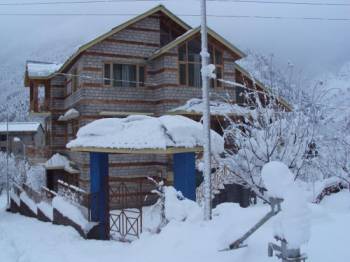 4D/3N
4D/3N
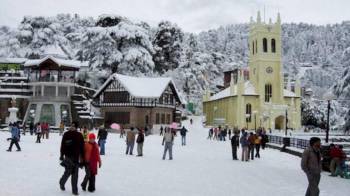 5D/4N
5D/4N
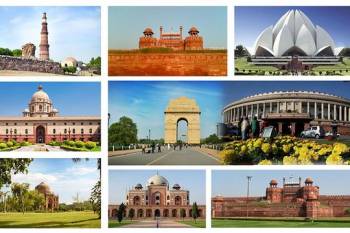 5D/4N
5D/4N
 4D/3N
4D/3N
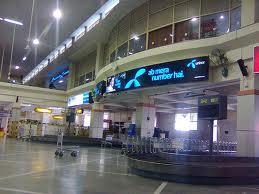 11D/10N
11D/10N
Gangtok - Lachen - Lachung - Pelling - Darjeeling
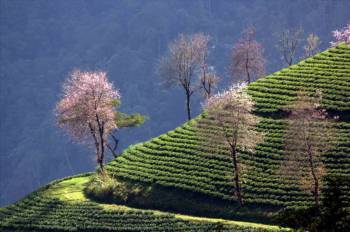 6D/5N
6D/5N
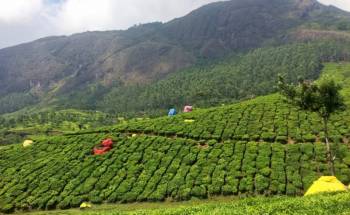 5D/4N
5D/4N
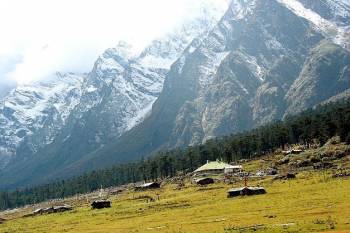 9D/8N
9D/8N
Amazing Beauty of Khangchendzonga Tour
Darjeeling - Pelling - Gangtok - Kalimpong - New Delhi
 5D/4N
5D/4N
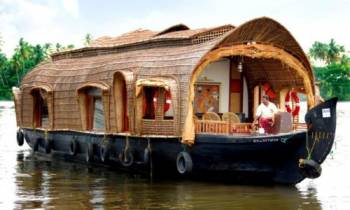 8D/7N
8D/7N
 8D/7N
8D/7N
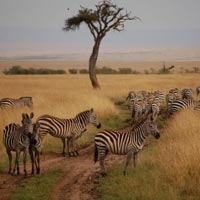 8D/7N
8D/7N
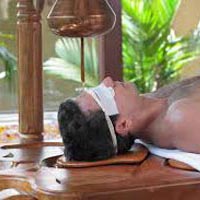 8D/7N
8D/7N
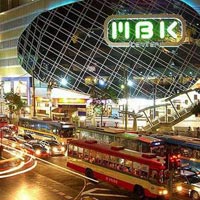 8D/7N
8D/7N
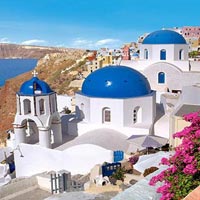 8D/7N
8D/7N
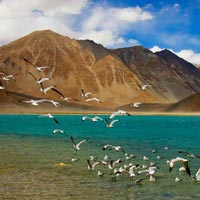 8D/7N
8D/7N
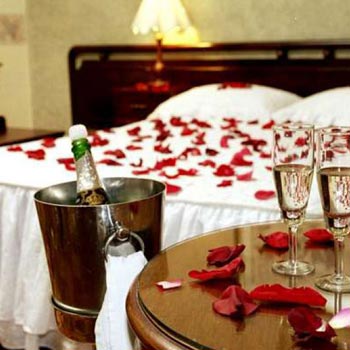 8D/7N
8D/7N
Delhi Shimla Manali Honymoon Package
New Delhi - Shimla - Manali - Chandigarh City
 8D/7N
8D/7N
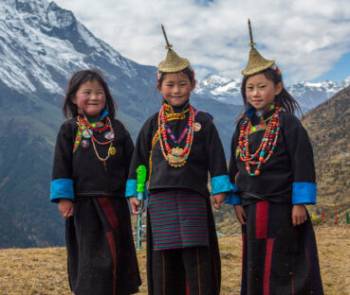 5D/4N
5D/4N
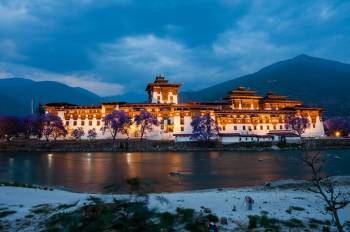 7D/6N
7D/6N
6 Nights/ 7 Days - Bhutan Happiness Tour
Punakha - Bumthang - Paro - Thimphu - Phobjik
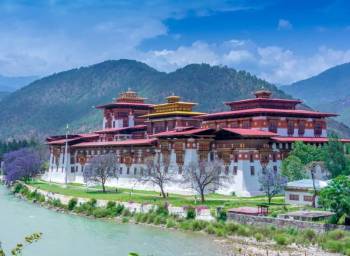 7D/6N
7D/6N
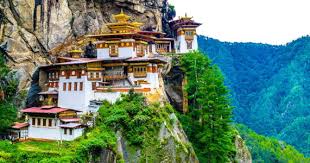 7D/6N
7D/6N
 20D/19N
20D/19N
20 Days Land Package Country Tour Bhutan..
Punakha - Paro - Phuntsholing - Bagdogra - Bumthang - Mongar - Trashigang - Trongsa..
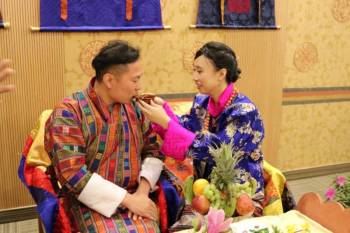 4D/3N
4D/3N
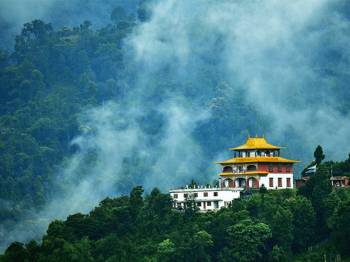 8D/7N
8D/7N
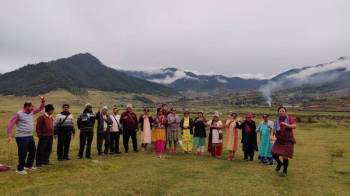 6D/5N
6D/5N
 7D/6N
7D/6N